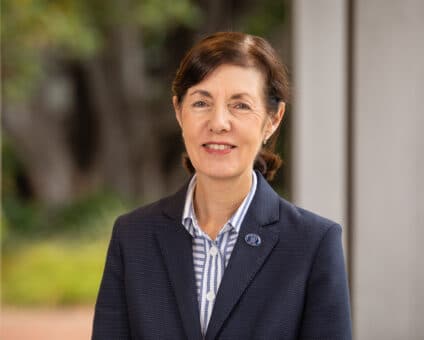Lauriston Principals and their legacy
Margaret and Lilian Irving
Margaret and Lilian Irving were the daughters of eminent Victorian educator Professor Martin Howy Irving. Educated at home by their father, the Irving sisters began their teaching careers in the early 1880s: Lilian at Ruyton Girls’ School and Margaret at Hawthorn Grammar.
In 1901 the Irving sisters opened their own school ‘Lauriston Girls’ High School’ in a rented house in Erskine Street, Malvern. The School rapidly outgrew its first home, moving to larger premises in Malvern Rd in 1903, and then in 1907 to its present site in Huntingtower Rd, Armadale.
By the time the Irving sisters handed the reins to Miss Elizabeth Kirkhope in 1933, Lauriston had acquired an enviable reputation for academic and sporting excellence. The success of the School reflected its founders’ commitment to improving both the quality of secondary education for girls and the status of the teaching profession.
Margaret Irving was a member of the first council of the Incorporated Association of Secondary Teachers of Victoria (IASTV), formed in 1905, and both sisters were members of the Headmistresses’ Association, founded in response to the Victorian Registration of Schools and Teachers Act 1905. The Irvings also played key roles in the establishment of the Invergowrie Homecraft Hostel.
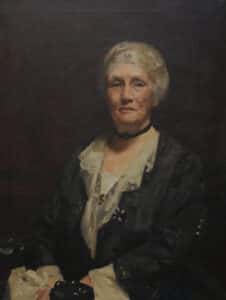
Margaret Irving | 1901-1935
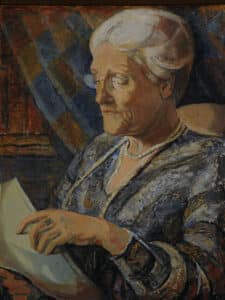
Lilian Irving | 1901-1935
Elizabeth Kirkhope
Elizabeth Kirkhope was born on 8 February 1896, the first of nine children of John and Elizabeth Kirkhope (née Corr), who had emigrated from Scotland in 1895 to establish a branch of the Catholic Apostolic Church in Victoria.
Elizabeth and her six sisters all attended Lauriston Girls’ School, which was at this time run by Margaret and Lilian Irving, daughters of Edward Irving, founder of the Catholic Apostolic Church.
Academically gifted, Elizabeth was Dux and head prefect in 1914, her final year at school. She subsequently attended the University of Melbourne, where she majored in mathematics, graduating B.A. in 1918, and Dip. Ed. in 1919. Elizabeth followed this with an M.A. in mathematics while teaching at Ruyton Girls’ School. She then returned to Lauriston for three years before travelling to Europe and teaching at Tottenham Girls’ High School, London. After another brief stint teaching mathematics at Lauriston in 1926, Miss Kirkhope took the position of headmistress at Lowther Hall.
Miss Kirkhope remained at Lowther until late 1933, when she returned to Lauriston as Headmistress, purchasing it outright from the Irving sisters in 1935. She guided the School through the difficult years of the Depression, and in 1948 successfully managed the transition of the School from private ownership to a non-profit limited guarantee company. In 1956 she handed the academic affairs of the School to Miss Gladys Davies but remained resident principal until 1964.
A skilled administrator, Miss Kirkhope worked for many years to improve the professional status and remuneration of female teachers through the Association of Headmistresses of Girls’ Secondary Schools Victoria and the Women Teachers’ Wages Board. She was also closely involved with the Invergowrie Homecraft Hostel (of which her sister Margaret was principal 1938–1967) and the Associated Teachers’ Training Institute.
Miss Kirkhope retained close connections with Lauriston and her former pupils in retirement. She died on 26 November 1978 and was buried with Anglican rites in Fawkner Cemetery.
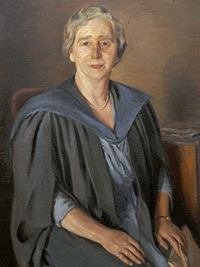
Elizabeth Kirkhope | 1933-1964
Gladys Davies
Gladys Davies, like her predecessor Elizabeth Kirkhope, was an old Lauristonian. A talented musician and sportswoman, Gladys Davies returned to Lauriston as a teacher in 1934 after obtaining a B.A. and Dip.Ed. from the University of Melbourne.
In 1955 she was invited by Miss Kirkhope to take up the position of Chief of Staff and, a year later, was promoted to Headmistress. Miss Kirkhope remained President of the Council and School Principal until her retirement at the end of Term 1, 1964, whereupon Gladys Davies stepped into the role but did not adopt the title of Principal.
Committed to preserving the Irving and Kirkhope inheritance, the Davies era was characterised by continuity with the past. High standards of academic achievement and conduct were demanded, with few concessions to the changing value systems of the 1960s. Ms Davies was considered a strict person who demanded high standards of conduct and academic achievement.
This period was notable for significant changes in the physical and educational environment of the School. Student enrolments grew steadily from 550 in 1955 to 800 in 1969, and major changes were required to accommodate them, including, in 1966, the demolition of the much-loved “Old House” and its replacement with the new Special Studies Wing. There were also a number of curriculum innovations, including a concerted effort to strengthen the School’s maths and science streams.
Gladys retired in 1973 and died on 1 December 2003.
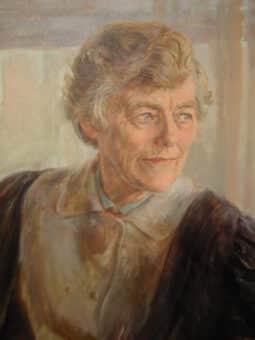
Gladys Davies | 1956-1973
Susan St Leon
Susan St Leon was born in Queensland and educated at the universities of Queensland and Heidelberg, Germany. Her teaching career included positions at Presbyterian Ladies’ College in Orange NSW, Fahan and Hutchins in Hobart, and Abbotsleigh in Sydney, before her appointment as Headmistress of Lauriston in 1973.
Mrs St Leon was the first headmistress in Lauriston’s history to have had no previous connection with the School, and it was under her leadership that Lauriston completed its transformation from family school to public institution.
Committed to strengthening the academic character of the School, Mrs St Leon continued the work started by Miss Davies in improving the maths and science departments whilst offering new subjects such as social studies, environmental studies and Asian studies. She also introduced curriculum innovations such as remedial teaching, foreign language study in the Junior School, creative dance and pottery classes. Other milestones included the extension of Irving Hall, the purchase of the historic mansions “Blairholme” and “Montrose” for use by the Junior School, the opening of the Kay Irving Wing and the development of the new St Leon Library and Resource Centre.
In 1982 Mrs St Leon retired from Lauriston to pursue her passion for growing roses. She is widely regarded as one of the foremost authorities on rose cultivation in Australia, having established a number of remarkable gardens in Victoria and Tasmania and written extensively on the subject. Susan passed away on 6 September 2019.
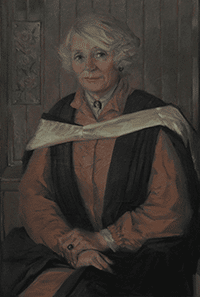
Susan St Leon | 1973-1982
Ruth Tideman
Ruth Tideman was born in South Australia and studied biochemistry and organic chemistry at the University of Adelaide. After marriage, she taught in Adelaide and the United Kingdom before being appointed Deputy Headmistress of the Wilderness School in 1978.
Mrs Tideman came to Melbourne as Headmistress of Lauriston Girls’ School in 1983. Under her leadership, Lauriston consolidated its reputation for academic excellence, flexibility in providing a balanced education, and ability to graduate multi-skilled girls with the confidence to succeed in life.
Among Mrs Tideman’s initiatives were the establishment of the Lauriston Foundation, consolidation of the Junior School and the introduction of pre-Prep classes, implementation of the Reggio Emilia philosophy for early childhood education, and the introduction of the International Exchange Program. She was also the driving force behind the development of the Howqua campus for Year 9 girls, which opened in 1993.
During Mrs Tideman’s tenure, there were many changes to the School’s building environment, including the construction of the Staff Centre, the Refectory and the new Music School.
Mrs Tideman was Chairman of the Invergowrie Foundation 1992–1995, and in 2001 was made a Member of the Order of Australia (AM) for services to education.
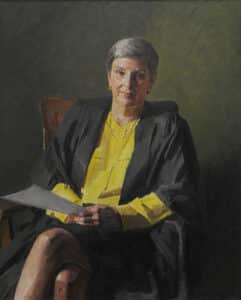
Ruth Tideman AM | 1983-2000
Meg Hansen
Meg Hansen was born in New Zealand and graduated B.A. from Otago University, majoring in literature and philosophy. She completed a Master of Arts in 1979 and subsequently obtained post-graduate qualifications in teaching, educational administration and curriculum development. After several years teaching in New Zealand, Ms Hansen moved to Melbourne, where she was Vice Principal of the Westbourne and Williamstown Grammar Schools 1995–1999.
Ms Hansen was appointed Principal of Lauriston in 2000, following the retirement of Mrs Ruth Tideman. An educational innovator, Ms Hansen stressed the need to provide students with the social, intellectual, physical and ethical skills required to flourish in the 21st Century. The wide range of curriculum developments and building projects initiated during her tenure were planned in support of this goal.
Amongst her innovations were the introduction of programs to promote the social and emotional wellbeing of students, the establishment of the Lauriston Institute to provide enhanced professional development for staff members, and the introduction of a new middle years’ curriculum.
Building projects included the redevelopment of the art and visual communication precinct, the construction of a new Student Services Centre, the opening of the Science and Resource Centre, the construction of the new Lilian Bayley Centre for Years 7 and 8, and the development of a Studio for Dance and Movement.
Ms Hansen continued the commitment of her predecessor to the development of the Howqua campus. During the years 2000–2010, the Howqua campus was enhanced by the construction of the Brooks Frazer Arts Centre, a new library and resource centre, an outdoor classroom, art and music facilities, health centre and additional accommodation for staff and students.
Ms Hansen resigned in 2010 to take up a position as Principal of Westbourne and Williamstown Grammar School.
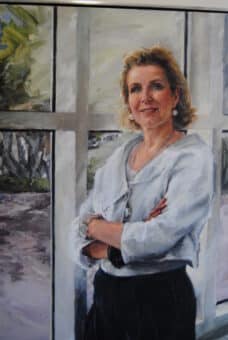
Meg Hansen | 2000-2010
Susan Just
Susan Just was born in Brisbane, Queensland. In addition to a Bachelor of Arts and a Diploma of Education from the University of Queensland, she also holds a Master of Educational Administration (University of New England) and in 2009 completed an Advanced Management Course at Harvard University.
She has been working as an educator for over 30 years. Beginning her teaching career in government schools in Queensland, Susan went on to gain extensive teaching and leadership experience in the independent school sector in Australia; in addition to her current role, she has been the Principal of three independent girls’ schools in Queensland and Canberra.
Susan’s strong area of interest is in curriculum and looking forward to the future education needs of girls. Since joining Lauriston in 2010 she has focused on advancing the School’s STEM program from Kindergarten to Year 12. In 2014 she achieved an Australian first by establishing the FabLearn Lab in collaboration with the Stanford University’s Graduate School of Education.
She has spent significant time reviewing and enhancing the School’s signature Howqua program for Year 9 students and further strengthening academic programs to provide students with a strong foundation for Years 10–12. In 2020, Susan also oversaw the introduction of a new micro-credentialling program which provides students with ‘digital badges’ that showcase skills, knowledge, capabilities or experience beyond their ATAR study score.
Student welfare and wellbeing has been another area where Susan has overseen significant change, with strong support provided to Year 9 students during their Howqua year, and a range of targeted wellbeing and resilience programs offered from Kindergarten to Year 12. Susan has also focused on further developing the already strong relationships Lauriston has with its community, encouraging feedback from parents, staff, students and alumnae.
Throughout her time at Lauriston, Susan has worked with School Council to develop a comprehensive 10-year Masterplan to support the School’s aspiration to grow the breadth of its educational and experiential learning programs and provide world-class facilities for sport, health, music and the arts. Work on the first phase of the Masterplan – developing a new Sports, Health and Wellbeing Precinct, unifying the Junior School, and creating an Early Learning Centre at Blairholme has been completed.
